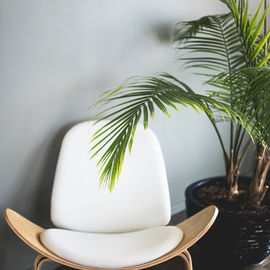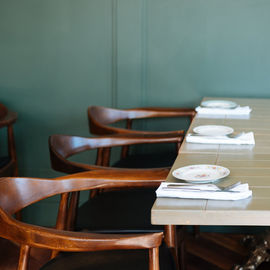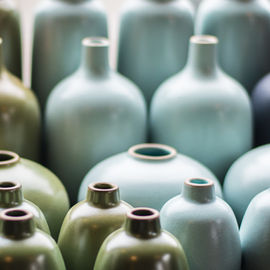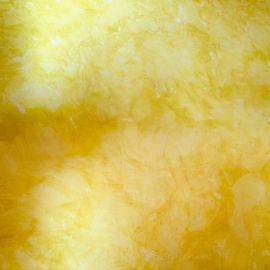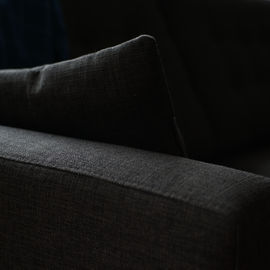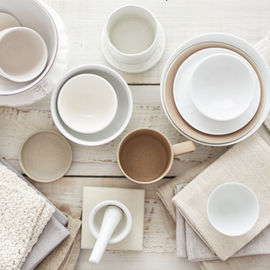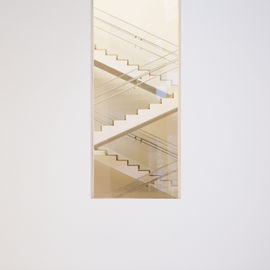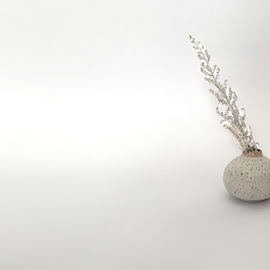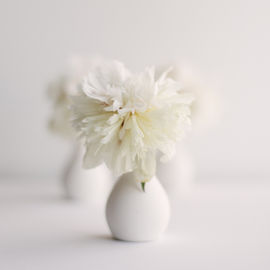

COLOR CONCEPTS
ELIA Painting and Constructions
Nothing has as much impact on the mood and ambiance of a room as color. Color can also be used to correct architectural proportions. For example, painting the short wall of a rectangular room a darker shade makes the room appear more square. Color can also accentuate architecture by painting only profiles.
Colour up your life
You can use color to blur the boundaries between ceiling and floor by painting the walls in one color and accentuating the ceiling with a higher proportion of white. Small rooms can be visually enlarged by keeping walls and ceilings the exact same color, as it's no longer so easy to distinguish where the wall ends and the ceiling begins.



COLORS
NATURAL COLORS
MONOCHROME COLORS
"Color isn't just an aesthetic choice. Each tone creates a different effect. Color influences everything we do and how we feel. It controls our appetite, our sleep, our energy levels, our conversations, and our behavior."
Iris De Feijter and Irene Schampaert, The Complete Book of Colorful Interiors


HOW COLORS AFFECT US
Blue & turquoise tones
The color blue can have diverse meanings and evoke different associations. The color symbolizes feelings of harmony, trust, and friendliness, and conveys an atmosphere of calm and serenity. Blue is also the color of longing. Interestingly, blue is also said to enhance creativity. For many people, the color has a calming effect and can even lower the heart rate.

Yellow tones
As with many other colors, the meaning of yellow can vary depending on context and interpretation. Yellow symbolizes optimism, communication, and warmth. It represents joie de vivre and conveys a positive, cheerful mood. However, the color can also be associated with negative traits such as naivety, envy, stinginess, selfishness, and infidelity. Furthermore, yellow is sometimes associated with luxury and wealth. This is partly because the color conveys a certain brightness and luminosity, which is sometimes associated with prosperity and success.

Monochrome colors
Shades of gray are often associated with indifference, conformity, and modesty. Gray also symbolizes feelings of emptiness and sadness. Similar to the color white, gray is also associated with a certain objectivity and functionality.
Black is a powerful color. It symbolizes power and strength. Black represents mysticism and timeless elegance. At the same time, black is often used to express practicality and functionality or to create a conservative impression. Black can also represent modernity.
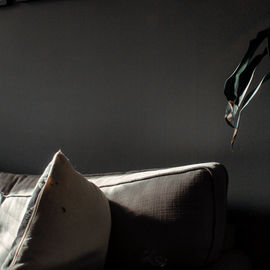
White & cream tones
The color white is traditionally the color of purity and innocence. It also represents peace—just think of the symbol of the white dove of peace or the white flag waved in war. White is also the color of freedom.
The color simultaneously expresses simplicity and neutrality, yet also signals practical functionality and adapts perfectly. Other associations with the color white include feelings of clarity, openness, but also emptiness. Furthermore, the color also represents white light, which is the sum of all colors.

Red tones
From bright coral red to dark vermillion, red is a great design element for your rooms because it attracts attention and represents vitality, energy, and dynamism. However, the exact effect of this color depends on its tone. Red can activate, invigorate, stimulate, warm, but also heat up. As a wall color, red tends to be loud and visually makes walls appear closer, making it unsuitable for narrow rooms.

"A dark gray couch looks dramatic against a white wall because the color contrast is so stark. If you paint the wall a softer shade, the overall look appears more nuanced, harmonious, and calming because the tones are balanced."
Theo-Bert Pot, Dutch interior designer





